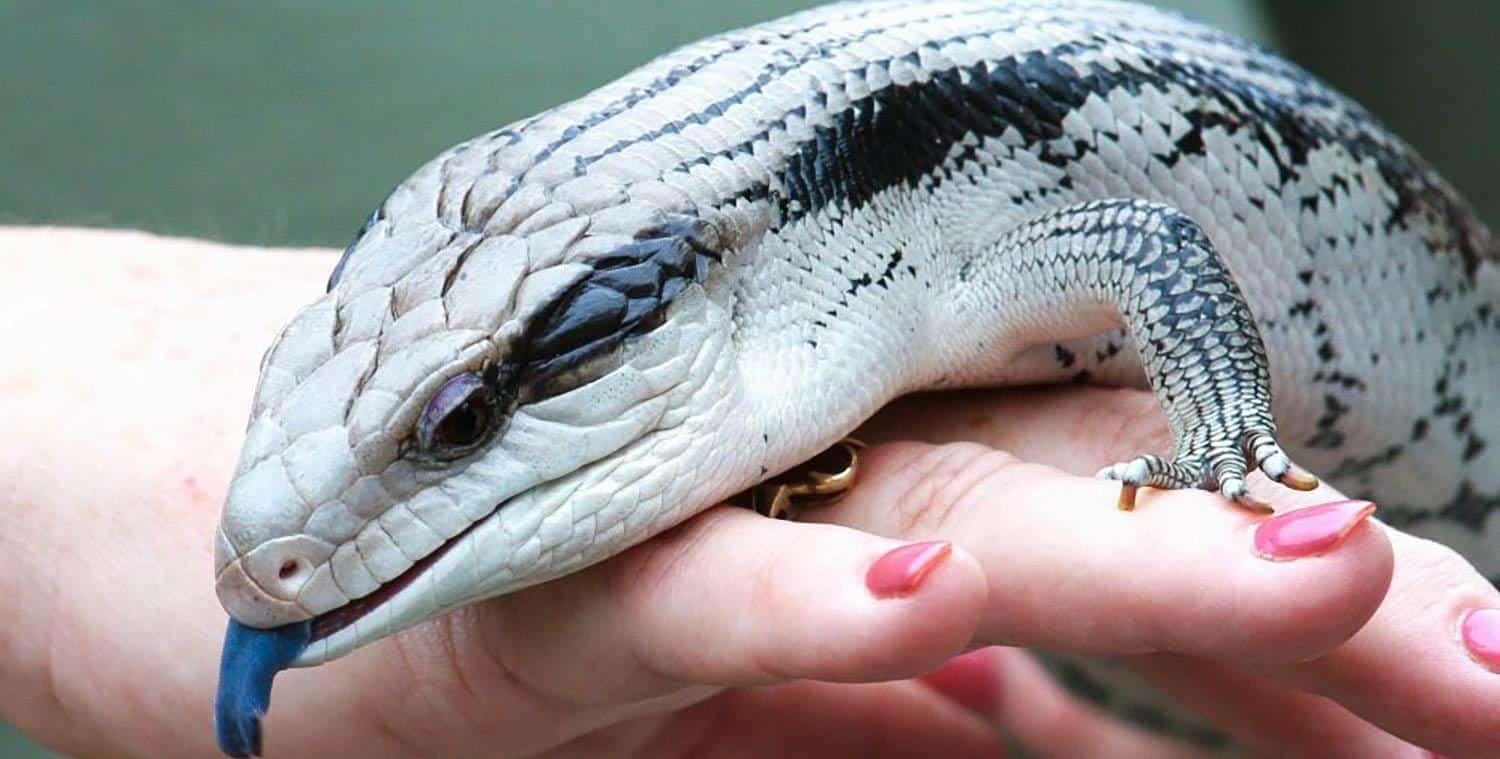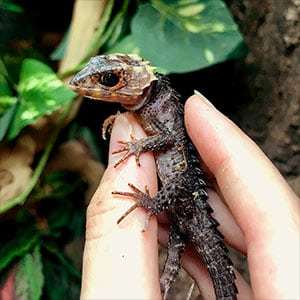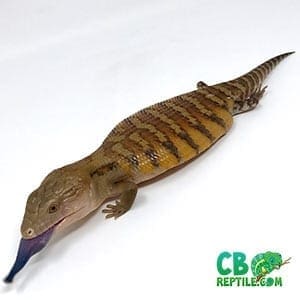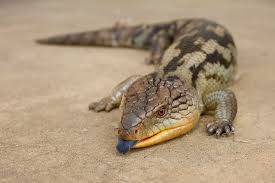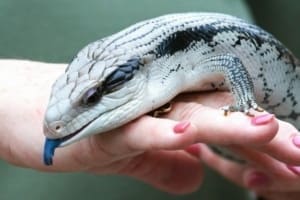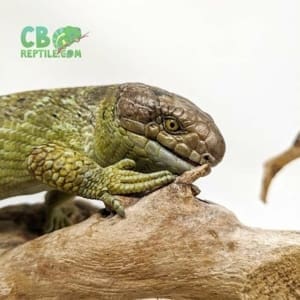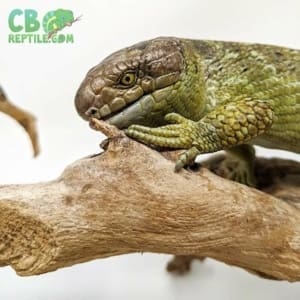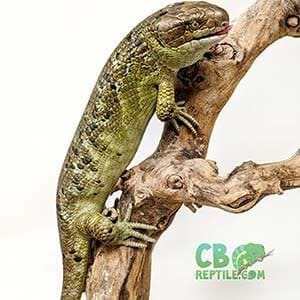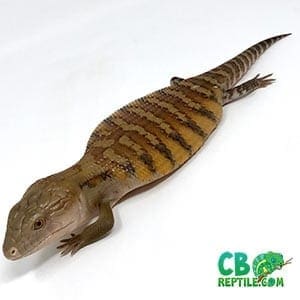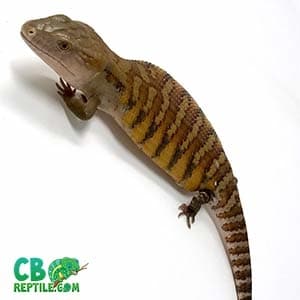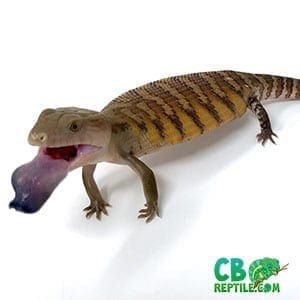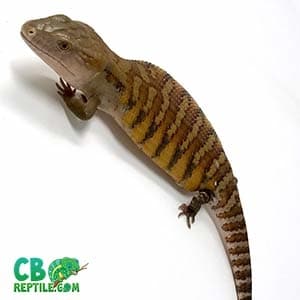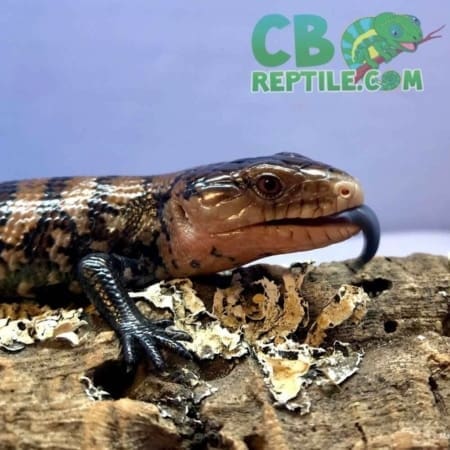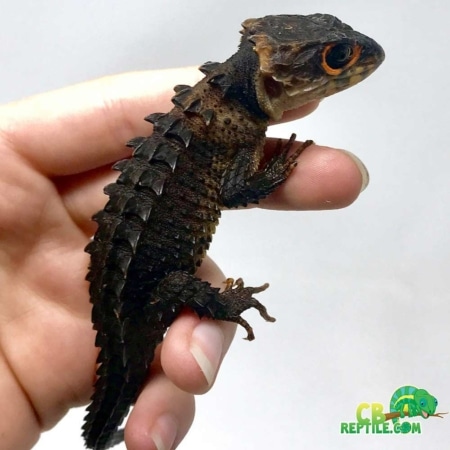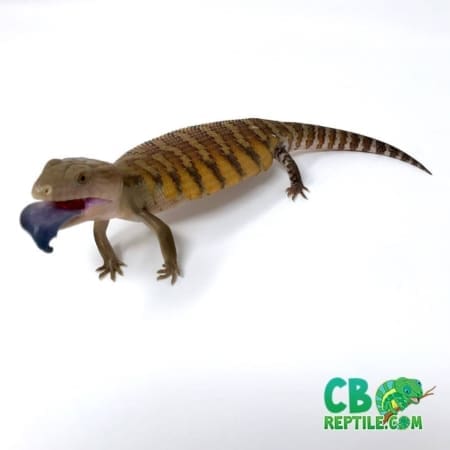Skinks for sale online
We have a variety of captive-bred baby skinks for sale online. We offer red tail skinks, red eyed crocodile skinks for sale as well as the most popular pet skink for sale, the Blue-Tongued Skink for sale (Tiliqua scincoides intermedia). Lastly, we also offer the super cool monkey tailed skink for sale. Also, know as prehensile-tailed skink for sale, the Monkey tail skink can actually hang and climb, like a real monkey!
Looking for a new pet skink for sale? You have come to the right place! CBReptile.com is your source for the best baby skinks for sale in the USA! We offer a variety of captive-bred skinks for sale including the blue tongue skink as well as many others. When shopping for a pet skink for sale, it is important to find the right skink breeders, selling only captive-bred baby skink for sale.
Blue-Tongued Skink for sale
General Blue Tongue Skink for sale care featured below applies specifically to the Northern blue-tongued skink, but most species and subspecies of blue-tongued skinks can be kept using these guidelines. Including the Red Eye Crocodile Skink. We have both blue-tongued skink for sale and red eye crocodile skink for sale most of the year.
Skinks for sale
Blue-tongued skinks are ideal for beginners, as they have loads of personality and great dispositions. Blue-tongued skinks are also an excellent choice for advanced hobbyists, as breeding them can be challenging and certain blue-tongue species and localities are extremely rare.
Blue-Tongued Skink for sale – Size
The Northern blue-tongued skink for sale is the largest blue-tongue. The total length of an adult usually ranges between 18 and 24 inches.
Blue-Tongued Skink Availability
Northern blue-tongued skinks are available seasonally, with most litters dropped June through August. Other species, including Indonesian blue-tongued skinks (Tiliqua gigas gigas), are more readily available and often imported, but Northern blue-tongued skinks are hardier and make better pets. Be sure to choose reptiles from a reputable source and look for active lizards with bright, open eyes. Check for open ear canals, clean toes with no sign of retained shed skin, and observe the overall appearance of the lizard for signs of health. Northern blue-tongued skinks range in price from $150 for babies to $250 for adults. High-colored or rarer forms may cost more. Rare blue-tongued skinks such as Centralian and shingle backs may cost between $1,500 and $5,000 each.
Blue-Tongued Skink for sale – Enclosure
Baby blue tongue skink for sale should be housed singly in plastic reptile enclosures, terrariums, or 20-gallon aquariums with full-screen tops. An adult blue-tongued skink requires, at a minimum, an enclosure measuring 36 inches long by 18 inches wide by 10 inches tall, with a full-screen top. Larger is even better. Remember, blue-tongued skinks are terrestrial and prefer floor space over the climbing area.
All blue-tongued skinks, both juveniles, and adults are best kept singly. You may be able to house females together, or a male and female pair, but observe them very closely. If they fight, keep them in separate cages. Males should never be kept together.
Blue-Tongue Skink Life Span
Kept properly, blue-tongued skinks can live for 15 to 20 years, and possibly longer.
blue Tongue Skink for sale – Lighting and Temperature
Before purchasing your new baby blue tongue skink for sale, establishing the proper habitat is key. BTS enclosures should have ambient temperatures on the cool side from 75 to 82 degrees Fahrenheit.
The warm end should include a basking area of 90 to 100 degrees. This can be accomplished using an under-tank heating device, such as a heat mat or heat tape, and/or an overhead incandescent basking light or heat emitter. If both under-tank and overhead heat are provided, the overhead heating devices should be turned off at night. Daylight bulbs should be on a maximum of 12 hours each day. The cooler end of the enclosure can drop to 70 degrees at night.
Skinks for sale
Blue-tongues may climb over rocks and logs, but they are not agile climbers. Be sure they cannot fall from any high areas, such as stacked rocks or branches, in their enclosures. Proper housing accessories include cork bark, Mopani wood, logs, large rocks and hide boxes or other shelters. Do not clutter the cage, as blue tongues enjoy plenty of open space. Elaborate decorations are unnecessary and will be rearranged by blue-tongues.
Aspen or cypress mulch (as long as it’s kept dry) can be used safely with blue-tongued skinks. Cedar chips, clay cat litter, orchid bark, and walnut shells should never be used, as these substrates may lead to toxicity, impaction, or respiratory concerns. Whichever substrate you choose, be sure your skink does not ingest it. Accidental ingestion can be deterred by using a feeding dish. Blue-tongues spend their time on the ground, so keep the substrate clean and maintained.
Blue-Tongued Skink for sale Handling and Temperament
Any new reptile, including a new blue-tongued skink, should be allowed to acclimate for a few days. It should not be handled until it is comfortable in its new environment. Once your new blue-tongue is feeding regularly, then handling can begin.
Initial handling sessions should be limited to 10 minutes or less per session. This can be done a couple of times each day during the acclimation process. Be sure to hold your blue-tongue skin for sale close to the floor or over a bed, sofa, etc., in case you accidentally drop the lizard. Also be sure to fully support the skink’s entire body, which will help your pet to feel secure.
Blue-Tongued Skink Diet and Feeding
Blue-tongued skinks are extremely hardy lizards that will thrive on just about any diet, but a well-balanced diet will result in a more active, healthier blue-tongued skink.
Blue-tongues are omnivorous and should be fed a combination of proteins, vegetables/greens, and fruits. Variety is important. Switch protein sources and provide diversity when feeding canned foods. For each feeding, a ratio of 50 percent vegetables/greens, 40 percent protein, and 10 percent fruit is ideal. Adult blue-tongued skinks should be fed every two to three days.
Young blue-tongues do best when fed every other day. Feed them as much as they will eat in one sitting. After your skink has stopped eating, uneaten food should be removed immediately.

